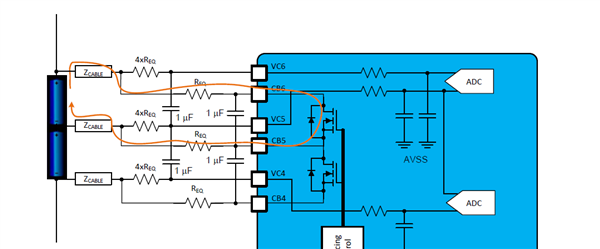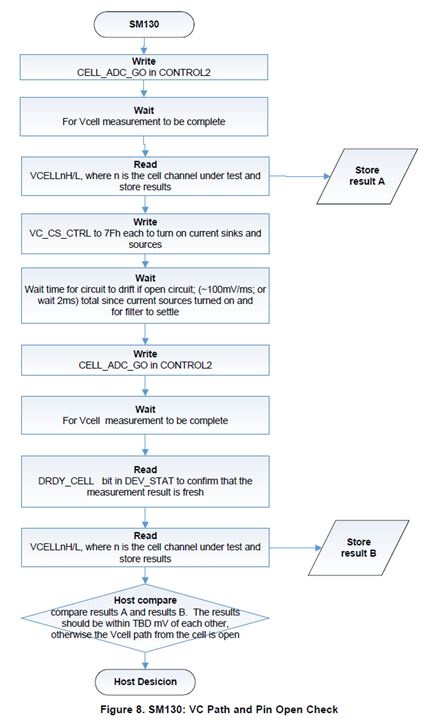Tool/software:
Hi TI Team:
We have implement SM130 according to Safety Manual in our project.
At normal ambient temperature, when we inject current sink and current source, the cell voltage will change about 50mV, it is consistent with the datasheet.
but when we test it at low temperature(about -40℃), the cell voltage only change about 31.3mV. according to datasheet and safety manual, the minimum threshold is about 37mV(the resistance(4xReq) is about 100Ω, the minimum of current sink is 0.17mA, and the minimum of curren source is 0.2mA). So we don't understand why the actual difference less than the minimum threshold.
Can you help us analysis this question?
Note:
in picture 4:
[Yellow]CellVolt::_0_ is the voltage of cell 1, the unit is 0.1mV;
[Red]CellVolt_OC::_0_ is the voltage of cell 1 when inject current sink and current source, the unit is 0.1mV;
[Cyan]DeltaVolt::_0_ is the difference between CellVolt::_0_ and CellVolt_OC::_0_, the unit is 0.1mV






